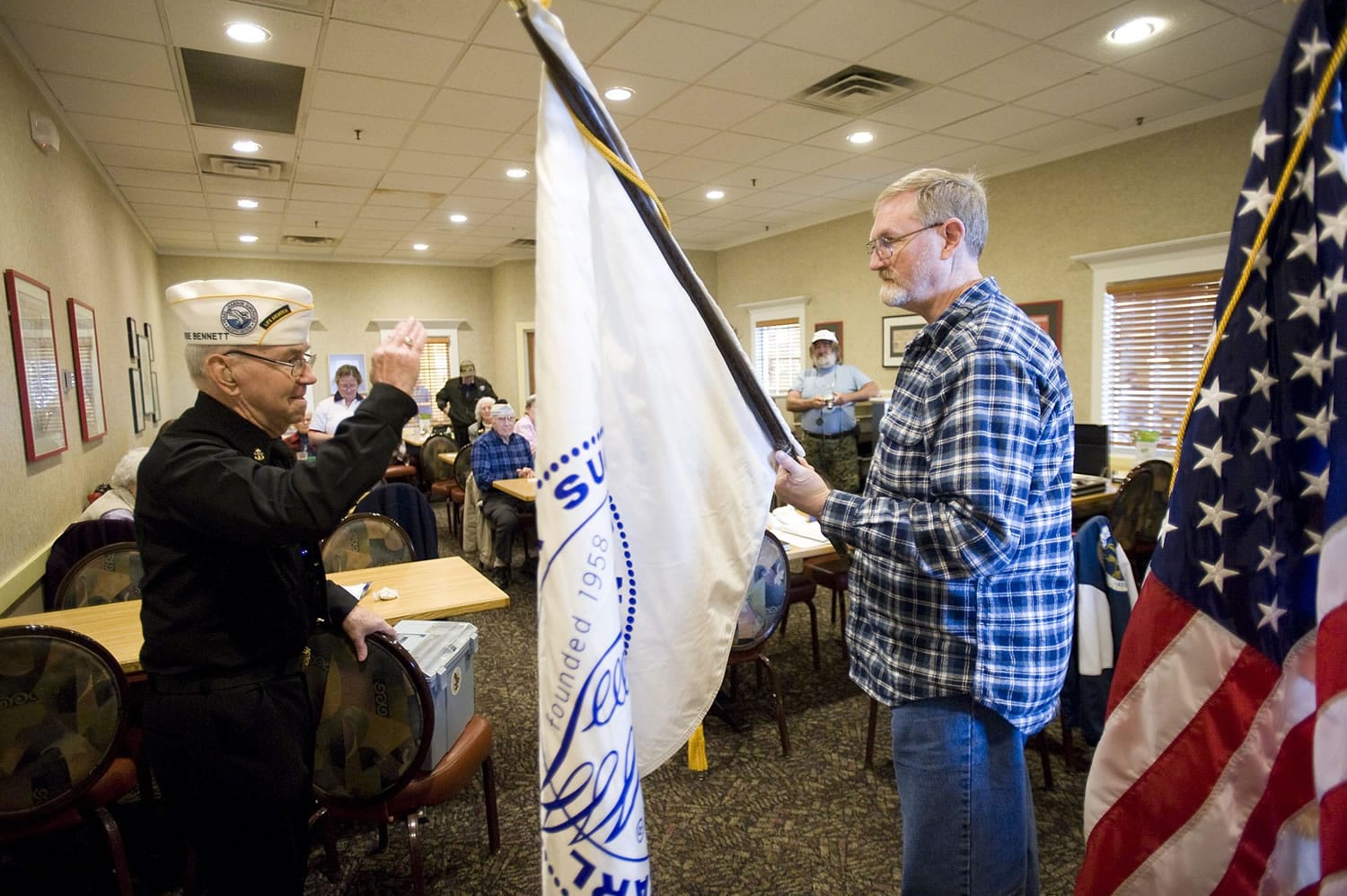The Vancouver chapter of the Pearl Harbor Survivors Association was established June 30, 1965; Paul Johnson and Bernard DeGrave are the remaining charter members.
“Remember Pearl Harbor!”
That was America’s rallying cry in the days following Dec. 7, 1941.
Seventy years later, the ranks of those who actually remember fighting in that battle have thinned considerably.
Now those remaining survivors are passing the torch to younger generations.
The handoff for the Vancouver chapter of the Pearl Harbor Survivors Association took place Friday in a restaurant banquet room. In his last official act as chapter president, Navy veteran George Bennett turned its assets and inventory over to Marc Lacy, son of Pearl Harbor survivor Harold Lacy.
Marc Lacy is president of the Pacific Northwest Sons and Daughters of Pearl Harbor Survivors, which will continue to hold commemorative events each Dec. 7, and schedule social events for survivors and their families.
In addition to closing out the Vancouver chapter, Bennett was part of the national shutdown. The 88-year-old Battle Ground resident was secretary of the national Pearl Harbor Survivors Association, which decided in September to disband.
“We’d been talking about it,” Bennett said. “One issue was aging.”
Seventy years ago, Bennett was a radioman in a Navy seaplane squadron based on Ford Island. The sailors’ barracks was near “Battleship Row,” a primary target of the Japanese attackers.
While it was a memorable morning, the evening was burned into Bennett’s memory as well. When they arrived for supper, half of their mess hall was dark; that’s where burnt bodies, rolled in blankets, had been laid out.
Bennett was among 120 survivors who attended the association’s final Dec. 7 gathering at Pearl Harbor; the national group closed down on Dec. 31.
Important legacy
Marc Lacy said the legacy of the Pearl Harbor survivors is an important part of American history. Harold Lacy, his father, was a 17-year-old radioman on the battleship USS Tennessee.
The Navy veteran, one of the Pearl Harbor survivors at Friday’s event, shared his story at the December commemoration in Vancouver.
“Nobody expected on Dec. 7 that we’d live through the war,” Lacy said on Dec. 7. “We were going through battleships pretty fast. Our odds of surviving were pretty slim.”
Harold Lacy’s story was not family lore for decades, by the way. Marc said he didn’t know his dad was at Pearl Harbor until about 1970.
An out-of-town guest at Friday’s lunch took the opportunity to remember Pearl Harbor, and the chaos resulting from the surprise Japanese attack.
Awnings were rigged over the deck of his destroyer, the USS Bagley, recalled William Sharrar. Crewmen had to cut the awnings away so they could see what the heck was going on.
Returning fire was a much bigger problem, said Sharrar, a resident of Mount Angel, Ore. Ammunition for the ship’s .50-caliber machine guns had been secured in a locker.
“I picked up a heavy object and broke the lock off,” Sharrar said.
Later, he went to work on a gun crew, handling the expended shell casings after the gun was fired.
“They were hot, and you needed asbestos gloves, Sharrar said.
He couldn’t find the gloves, so Sharrar had to handle the hot shell casings bare-handed.
“But then,” he said, “I didn’t hang onto them for long.”
Tom Vogt: 360-735-4558; tom.vogt@columbian.com




